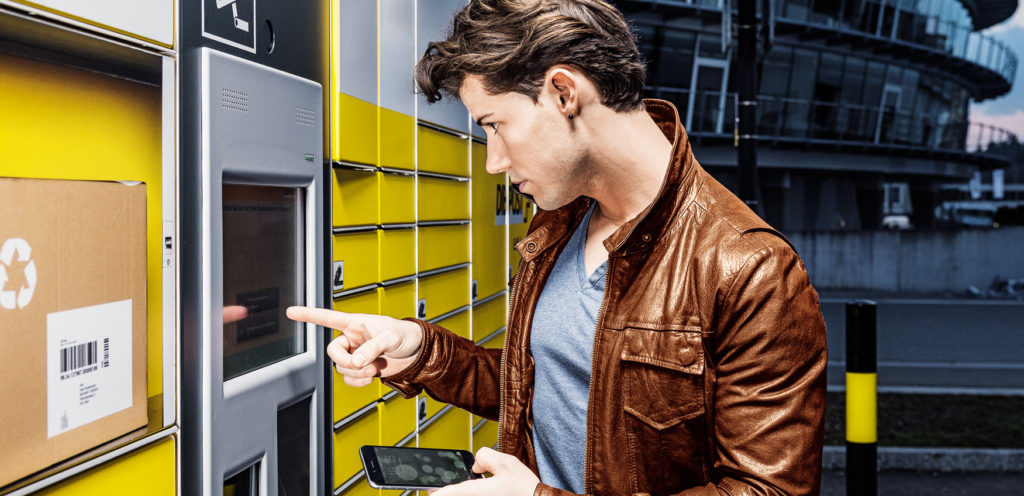As more and more parcel lockers are installed around the world, what makes customers choose them as a delivery option? Ozhan Zurel and Marek Rozycki analyze the current state of the parcel locker market and highlight areas for growth and innovation
E-commerce has driven B2C parcel volumes in recent years, which in turn has spurred growth in automated parcel machines (APMs), or parcel lockers. A growing portion of e-commerce items are delivered ‘out of home’ primarily via a PUDO point or an APM. The latter are growing fast. According to a 2017 IPC study, 11% of all parcels are delivered to an APM while 9% of returned parcels pass through the machines. As labor shortages in retail and the last mile grow, we can expect lockers and PUDOs to play a more important role.
The acceptability of APMs
There appears to be, however, a fairly large heterogeneity when comparing leading APM markets.
According to an IPC study, APMs appear to be most popular in Finland, Denmark and China, with up to a 43% use for parcel delivery. A Hermes study in 2015 showed that APMs are the most liked last-mile innovation, with 39% of UK end-users finding these APMs appealing.
In Sweden, the Netherlands and Belgium, APMs are fairly unknown to the broad public, but those who do use APMs state that they approach this new delivery method very positively. Germany, Spain and Poland each have over 5,000 APMs in situ, making them the leading European locker markets by number of machines.
Why consumers choose APMs
When it comes to choosing delivery to an APM, ecological reasons do not appear to be the top consideration for consumers. In Belgium, a study revealed that environmental considerations only play a minimal role when choosing between delivery options.
In Poland, a study showed how ecological reasons account for a mere 1% as a factor for choosing to deliver parcels to an APM, whereas the 24/7 availability (with outside machines) and lower delivery price top the table, with 55% and 32%, respectively.
Furthermore, the IPC study stated that the ability to select the delivery location received a score of 47%, ranking it seventh. Our own experience confirms that where APMs are well located (proximate and in a safe, accessible location) they always outperform PUDOs – and often home delivery – in consignee scoring.
Last Mile Experts’ experience shows that prominent placing on the e-tailer’s website and ‘out of home’ options being the default/free service is also important.
Why consignors choose APMs
Consignee decisions will always reflect their customer experience (CX), so the above factors are important. The consignor will also look at first-time delivery success, which is at an incredible level of almost 100% for most lockers.
This is important because fast and successful delivery leads to lower rates of returns and more repeat purchases. Also, while senders don’t always like returns, more and more are beginning to understand that an easy and convenient returns option via a locker, which is accessible 24/7, will give better CX and encourage repeat purchases.
Lockers or PUDOs… or both?
When discussing lockers, one important point is the fact that neither APMs nor PUDOs are a complete out-of-home solution in themselves. Lockers are expensive and take time to set up (planning permissions, rental agreements, foundations and power supply, purchase and delivery of the APM). The optimum model may indeed be a mixed one, having APMs in high volume, proven locations, but supported by PUDOs which can be easily set up and which can ‘take up the slack’ at peak times when volumes grow and APMs fill up.
The era of mobile APMs
The APM concept is still evolving. Ford will apparently be piloting a mobile delivery service in London, where electric vans act as mobile APMs and drive to a specific location, from where several foot and bike carriers will deliver the last mile.
Amazon has received a patent for integrating APMs within buses to make APM delivery more accessible to its customers. Customers would meet the bus at a convenient stop, and pick up their items from a removable delivery module attached to the vehicle. It is also experimenting with smart locks, which may well be a solution for improving delivery to single family residences.
Google is another tech giant that has been granted a patent for the development of a self-driving parcel delivery truck, which it has named the ‘autonomous delivery platform’.
Most of these ideas will require fine-tuning but one thing is clear: future customers will have more choice and more convenience should they be implemented. In the meantime, traditional lockers and PUDOs (including retailers’ click-and-collect options) will bear the brunt of out-of-home parcel volumes.
Bios:
 Ozhan Zurel is a regulatory economist at the Belgian Institute for Postal services and Telecommunications (BIPT) with a focus on e-commerce, last-mile delivery and postal end users. The information and views set out in this article are those of the author and do not necessarily reflect the official opinion of the BIPT.
Ozhan Zurel is a regulatory economist at the Belgian Institute for Postal services and Telecommunications (BIPT) with a focus on e-commerce, last-mile delivery and postal end users. The information and views set out in this article are those of the author and do not necessarily reflect the official opinion of the BIPT.

Marek Różycki is managing partner at Last Mile Experts, specializing in CEP and e-commerce last-mile advisory.


